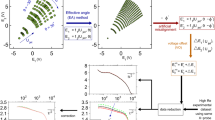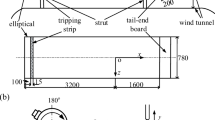Abstract
It is well known that significant errors occur in the velocity derivative moments measured in turbulent flows when the measuring transducer is too large or Taylor's hypothesis is used in high-turbulence-intensity flows. An additional error occurs when velocity derivative moments are measured with hot wires in high-turbulence-intensity flows, because the wires cannot resolve the individual velocity components in these flows. Estimates of the error this causes in the derivative moments measured with single-, cross-, and parallel-wire probes are developed herein. The errors are significant in the derivative moments measured with cross-wire probes, but are smaller in derivative moments measured with single- and parallel-wire probes. For example, the relative errors in measured in the far field of the round jet are 30–50% smaller than predicted in previous analyses.
Similar content being viewed by others
Author information
Authors and Affiliations
Additional information
Received: 10 March 1995/Accepted: 07 December 1999
Rights and permissions
About this article
Cite this article
Ewing, D., George, W. The effect of cross-flow velocity on mean-square derivatives measured using hot wires. Experiments in Fluids 29, 418–428 (2000). https://doi.org/10.1007/s003480000108
Issue Date:
DOI: https://doi.org/10.1007/s003480000108




